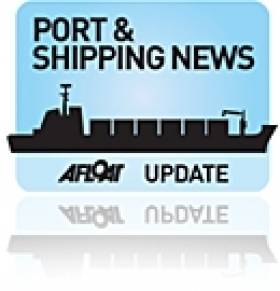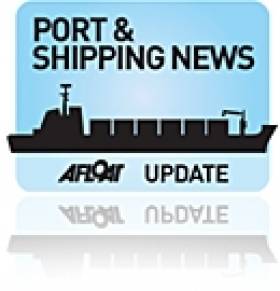Displaying items by tag: HapagLloyd
Post-Panamax Containerships Order from Hapag-Lloyd
#PostPanamaxShips – Container shipping giant, Hapag Lloyd prepares for Panama Canal's new locks opening next year with an order for five 10,500 TEU container ships, reports LloydsLoadingList.com
Not all major lines are seeking to boost competitiveness by buying the largest vessels available in a bid to reduce operating costs.
Hapag-Lloyd has instead ordered five new container ships of just 10,500 TEU capacity which it plans to deploy on South American trades and through the Panama Canal when its new locks increase the size of ships that can transit.
"When the expanded Panama Canal opens next year, Hapag-Lloyd will therefore have the optimal fleet for this trade," said the German line in a statement. "The expansion of the Panama Canal is one of the biggest civil engineering projects in the world, and will allow the passage of large vessels of up to 14,000 TEU from what is known as the post-Panamax class."
The new ships will feature 2,100 reefer plugs aimed at perishable trades and are due for delivery in 2016/2017 from Hyundai Samho Heavy Industries in South Korea.
A Cruiseship's Web-Cam View of Fellow Dublin Port Callers
#CruiseCallerTrio-Dublin Port was busy during dawn this morning as three cruiseships docked within a couple of hours, they are the Europa, Prinsendam and Ocean Princess, writes Jehan Ashmore.
Hapag-Lloyd's 199m Bahamas-flagged Europa (1999/28,890grt) arrived from Gromarty and she is moored alongside the North Wall Extension (P&O Terminal) next to the East-Link toll-lift bridge.
The five-star rated 408-passenger vessel has a forward facing web-cam overlooking her bow, noting directly ahead is P&O Ferries Liverpool route ro-pax Norbay, unless viewed later!... as she had departed this morning.
Of the remaining pair of cruiseships, the nearest visible is Princess Cruises 179m Bermuda-flagged Ocean Princess (1999/30,277grt) which is docked in Alexandra Basin (West) alongside Ocean Pier, at berth No. 33. She arrived from Waterford and is originally the R4, one of an octet of vessels built for Renaissance Cruises, with a 680 passenger capacity.
To the right of Ocean Princess can be seen the 'merging' illusion of the upper decks that belong to Holland America Line's 204m Dutch-flagged Prinsendam (1988/38,848grt). The smallest vessel of the HAL fleet, Princendam with almost 700 passengers, docked on the other side of Ocean Pier at berth No.37 which is within the adjacent Alexandra Basin (East).
She had sailed from Liverpool and is to continue her cruise to other Irish ports making an anti-clockwise circuit. Among Princendam's ports of call is Foynes, where she is to become un-expectedly the first caller of the season to the Shannon.
As previously reported, Voyages of Discovery's 15,396 tonnes Voyager, which was intended to be the first scheduled cruise caller to the estuary port, did not arise as it transpired that the ship had generator problems. This forced her 9-day Irish cruise to be curtailed in Killybegs during late May.
Hapag-Lloyd Wins Deep Sea Shipping Award
#SHIPPING AWARD – Hapag-Lloyd was awarded Deep Sea Shipping Company of the Year Award at this year's Irish Exporters Association's Export Industry Awards.
The category was sponsored by the Port of Cork Company which recognises the strategic role that deep sea shipping plays in Ireland's economy. The other nominees were: CMA-CGM Shipping Ireland Ltd., Dublin and MSC Ireland, Dublin.
For information on the other categories and the overall winner of Exporter of the Year Award, click HERE.































































